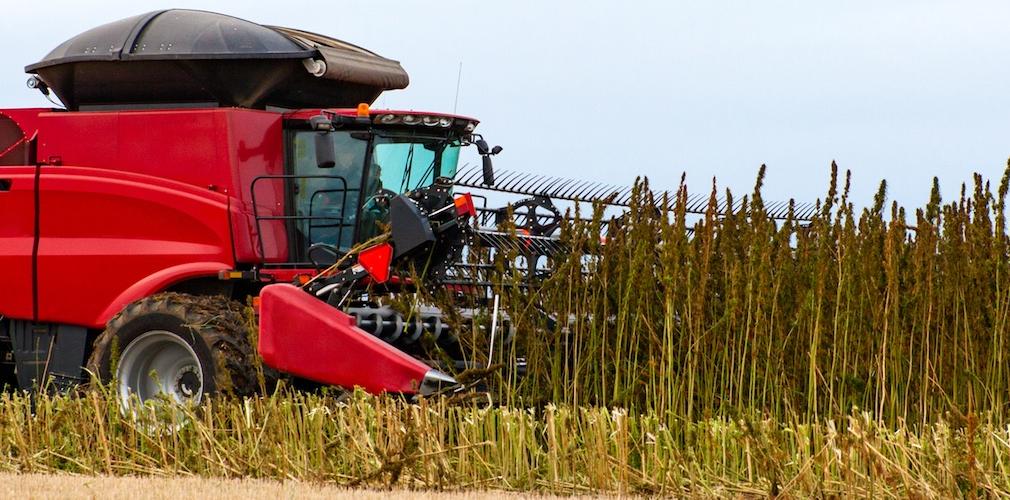On October 29, 2019, the U.S. Department of Agriculture (USDA) announced the much-anticipated interim rule for the domestic production of hemp at Federal level. This rule creates a regulatory framework for nationwide hemp production. The 2020 planting season will serve as an opportunity to put the regulations into practice and make the necessary adjustments. This interim rule will be effective for two years and will then be replaced with a final rule.

The Agricultural Act (or Farm Bill) approved by the Trump administration in 2018 legalized hemp as an agricultural product and removed it from the list of controlled substances, providing its THC content is below 0.3%. Nowadays hemp production is legal in 46 states, but since the law was passed last year, farmers, regulators, stakeholders, and security forces have been working in a state of uncertainty, while they waited for the Department of Agriculture to define a course of action.
This interim regulation is expected to solve some of the most important legal issues, such as crop transport across state borders. But it is also crucial for marijuana firms that are now interested in hemp as a legal crop according to Federal law.
What are the requirements for hemp production?
The rule includes provisions for the Department of Agriculture to approve plans for the production of hemp in States or territories of Indian Tribes, and provides directions on:
- How to maintain information on the land on which hemp will be grown.
- Procedures for testing hemp's THC concentration levels.
- Protocols for the disposal of non-compliant plants.
- Licensing requirements.
- It also establishes a Federal plan for hemp producers in States or territories of Indian Tribes that are not covered by an approved production plan.
After approval of the State and Tribe production plans, licensed growers will be able to opt for a series of Federal farming programs, including crop insurance programs by the Federal Crop Insurance Corporation (FCIC).

Looking for a global context
Therefore, farmers wishing to grow hemp must first hold a license or authorisation under a USDA, State or Tribe hemp program. Hemp cannot be grown in states such as South Dakota, where production has still not been legalized.
However, hemp can be imported legally into the four states where hemp cultivation is still illegal. These new regulations confirm that hemp transport cannot be restricted, which grants farmers access to all national markets.
THC limits and testing procedures
One major remaining doubt is what will happen to crops with a THC concentration over 0.3%. The new regulation already contemplates that growers may involuntarily produce a crop over the limit, despite their efforts to comply with Federal law.
Therefore there will be some flexibility regarding THC levels: crops over 0.3% due to genetic errors, growing conditions, or variation in the sampling procedures, will be submitted to a measurement of uncertainty to determine the accuracy of the test results. Producers will not be committing a negligent violation if their plants' THC levels do not exceed 0.5%; however, hemp plants must be disposed of as they would be considered a controlled substance.

The future two years on
These new regulations offer a much needed guide for farmers and other parties involved in industrial hemp production. The USDA has clarified some of the doubts regarding testing; it understands that farmers can do everything correctly but still end up with the occasional 'hot hemp' crop that exceeds the limit, and must not be penalized for results out of their control.
Fortunately, this regulation confirms that the states where hemp production has not been legalized cannot interfere with interstate transportation of hemp. It has also smoothed the path for other agencies and industries, like financial institutions and insurance providers, so that they can start to establish their own guidelines and procedures for industrial hemp.
There are still some unresolved issues regarding hemp production and distribution that need to be settled to provide greater certainty and uniformity to those involved in the hemp industry. But it is remarkable that the U.S. Department of Agriculture has developed a comprehensive set of regulations for such a complex matter in such a short period of time. Now growers and all those concerned must participate in this process to fine tune the details until its definitive approval in 2021.





Give us your feedback
Your rating (between 1 and 5)
1 2 3 4 5Leave a comment